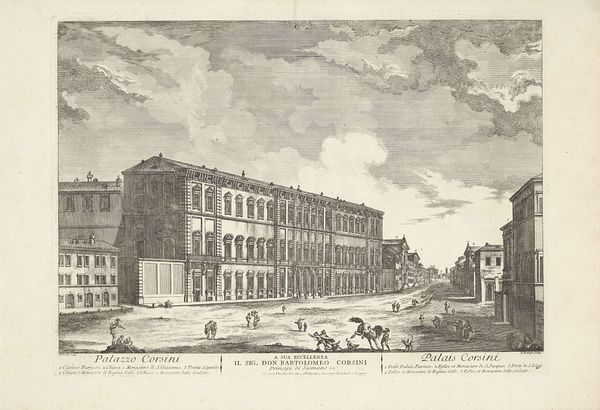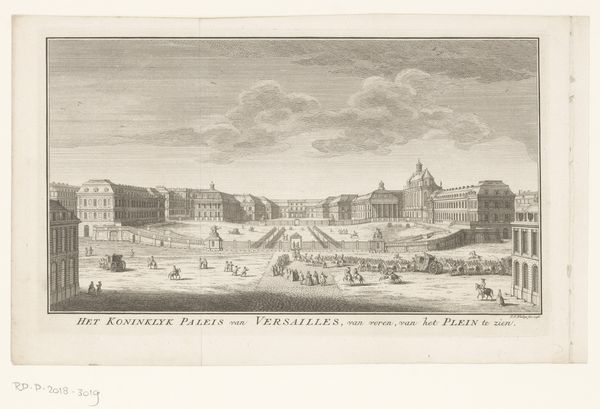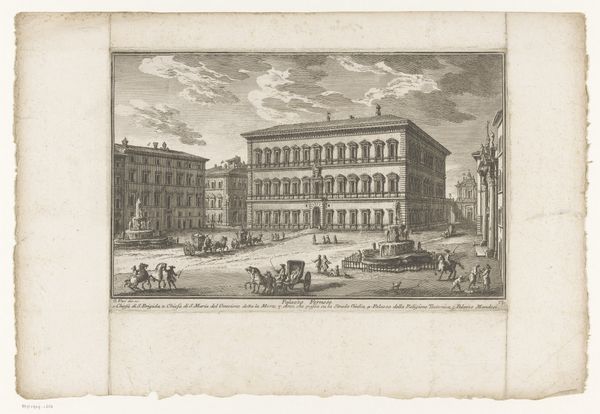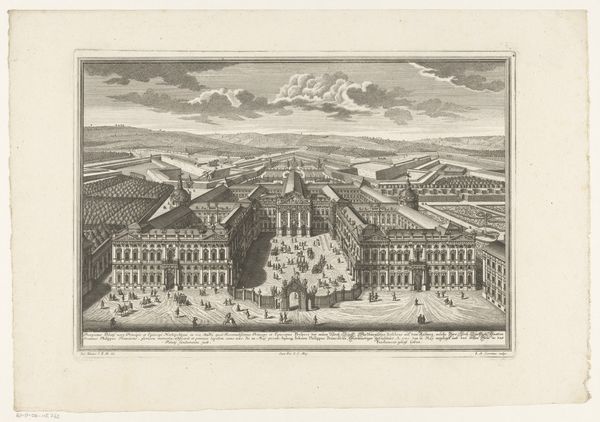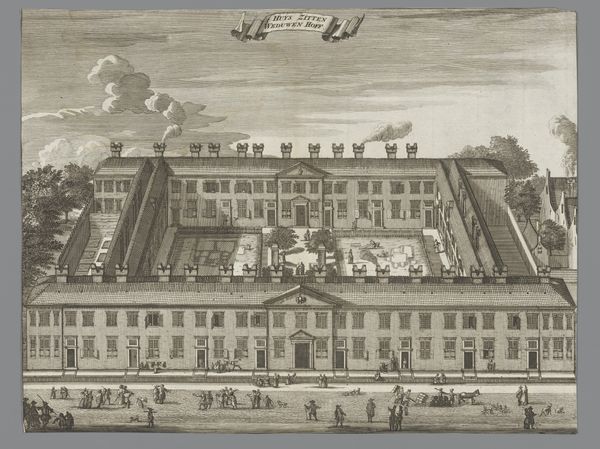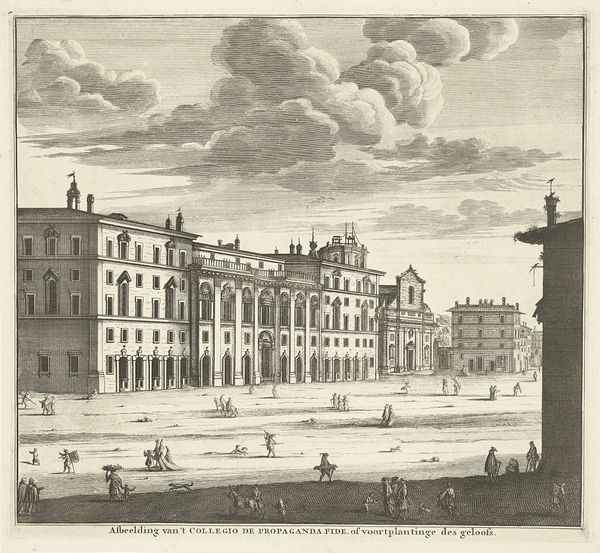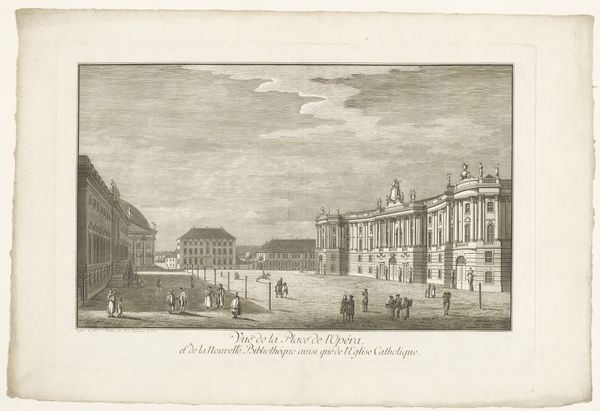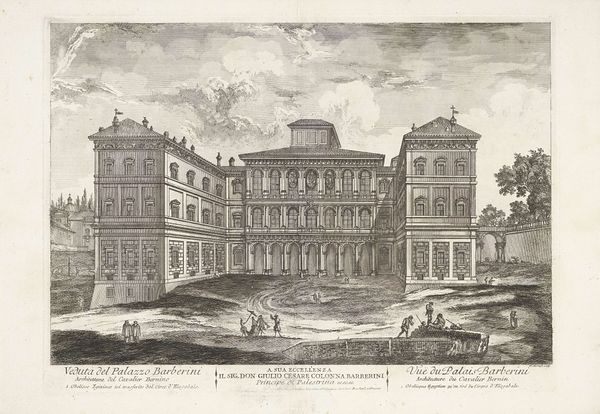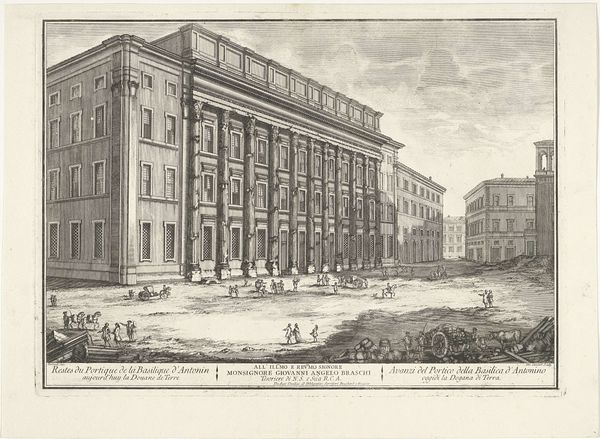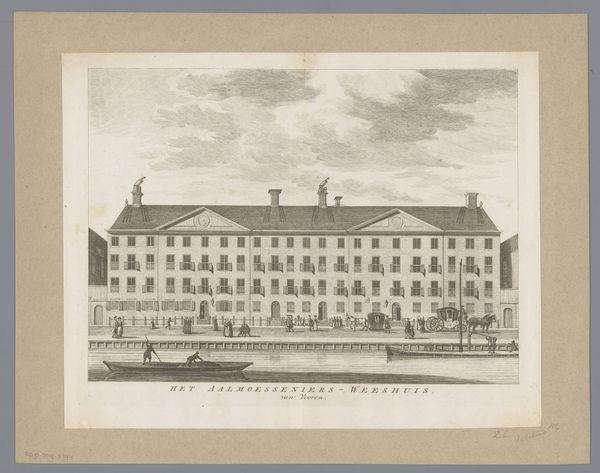
print, engraving, architecture
#
baroque
# print
#
cityscape
#
italian-renaissance
#
engraving
#
architecture
Dimensions: height 262 mm, width 353 mm
Copyright: Rijks Museum: Open Domain
Curator: Here we have an engraving from 1704 titled "Ospedale Maggiore te Milaan." Editor: It feels remarkably balanced, almost like a stage set, with the architecture taking center stage. A very calculated stillness about it. Curator: This image depicts the Ospedale Maggiore in Milan, now known as the Università degli Studi di Milano. Given its baroque style, let's consider the methods involved: the selection of paper, the engraver's tools, the press used. How did these elements contribute to disseminating images and ideas? Editor: It’s also interesting to observe how a building dedicated to healing is depicted with such grand formality. Notice the meticulous rendering of the colonnades, drawing the eye toward a central dome, all of which are symbols of stability and civic pride. Curator: Indeed. Think about the societal function of a hospital at the time. An engraving allowed for multiple impressions, serving to promote the image of civic beneficence to a broad audience. It’s propaganda, essentially, using architectural representation. Editor: Perhaps the architectural symbolism worked on multiple levels. The imposing structure could suggest the Church's authority while promising sanctuary and care, appealing to the collective subconscious during a vulnerable time. What did accessing healthcare represent psychologically at the time? Curator: It would have been closely tied to social class. Wealthy patrons often funded such institutions, expecting both earthly and heavenly rewards. These images reinforced the hierarchy: philanthropy from above, gratitude from below, printed and circulated. Editor: Looking at the people depicted here—so tiny and subordinate to the vastness of the architecture—I’m left pondering the nature of care and representation. Do the images portray genuine empathy, or are they performative displays of civic virtue? Curator: A fascinating point. Ultimately, prints like these provide an avenue into grasping the complicated social and material realities that were circulating within a very precise time and location. Editor: A perspective shift is achieved here—from stone to soul and from mortar to meaning—revealing art's potential to document shared experience and to prompt questions.
Comments
No comments
Be the first to comment and join the conversation on the ultimate creative platform.

